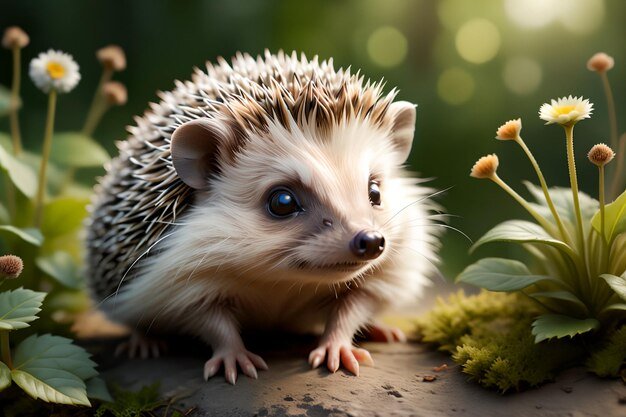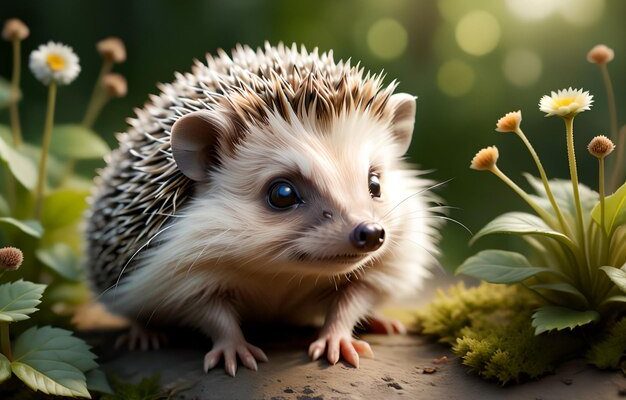
Hedgehogs are fascinating creatures, and their contributions to the ecosystem are vital. They help control pests and maintain a healthy balance within their habitats. Imagine a world where these little guys didn’t exist—pests could take over, and nature would be out of whack. So, let’s dive deeper into how hedgehogs impact their surroundings and why protecting them is essential for a balanced ecosystem.
What Do Hedgehogs Eat?
Hedgehogs are primarily insectivores, which means their diet mainly consists of insects. You might be surprised to learn that they feast on a variety of critters, including:
- Beetles
- Earthworms
- Snails
- Frogs
- Small rodents
Their knack for munching on pests is incredibly beneficial for gardens and farms. By keeping insect populations in check, hedgehogs help reduce the need for chemical pesticides. So, the next time you spot a hedgehog roaming your garden, remember: they’re not just cute—they’re working hard to keep your plants healthy!
Additionally, hedgehogs are nocturnal, meaning they’re most active at night. This nighttime lifestyle allows them to hunt for food without competing too much with daytime predators. You might be wondering how they find their meals in the dark. Well, they have an exceptional sense of smell and hearing, which helps them locate tasty treats hidden under leaves or soil.
Hedgehogs and Pest Control
You might think of pest control as a straightforward job involving traps or sprays, but nature has its own methods. Hedgehogs serve as a natural form of pest control, consuming a variety of insects that can damage plants. For example, a single hedgehog can eat thousands of insects in a single season. That’s a lot of bugs!
This pest control role is especially important in agricultural areas where crops are susceptible to insect damage. By having these little guys around, farmers can enjoy healthier harvests. Plus, hedgehogs are essentially doing the work without any harmful chemicals, which is a win-win for the environment.
It’s interesting to note that hedgehogs have a unique method of eating. They tend to devour their food whole, which means they help with pest control by not leaving any scraps behind. So, while they might look like cute little bundles of quills, they’re actually quite effective predators in the ecosystem.
How Hedgehogs Impact Soil Health
Soil health is vital for sustaining life, and hedgehogs contribute to this in unexpected ways. As they dig around for food, they aerate the soil, which improves its quality. This natural tilling process helps water, air, and nutrients reach plant roots more effectively.
You could think of a hedgehog as a tiny gardener, turning over the soil and enriching it with their waste, which is rich in nutrients. This, in turn, supports plant growth and promotes a thriving ecosystem. Healthy plants attract more wildlife, which creates a rich, biodiverse environment.
Moreover, by eating pests like slugs and snails that can damage plants, hedgehogs indirectly support healthier ecosystems. Fewer pests mean stronger plants and more opportunities for other wildlife to thrive. When you consider the bigger picture, the role of hedgehogs in soil health becomes even clearer.
The Importance Of Hedgehogs In Biodiversity
Biodiversity, or the variety of life in an ecosystem, is crucial for its stability and resilience. Hedgehogs are an integral part of this balance. By being both prey and predator, they contribute to the complex web of life that supports many other species.
For example, hedgehogs provide food for larger predators like foxes and owls. In turn, these animals help regulate ecosystems by controlling smaller populations. The loss of hedgehogs could disrupt this balance, leading to overpopulation of smaller species, which could then impact vegetation and ultimately alter the entire habitat.
In addition, the presence of hedgehogs often indicates a healthy environment. If you see hedgehogs in your area, it’s usually a sign that the ecosystem is functioning well. This is important for conservation efforts, as protecting hedgehogs also means protecting their habitat and all the other life forms that rely on it.
Threats to Hedgehog Populations
Sadly, hedgehog populations are in decline due to various factors. Urbanization has drastically reduced their natural habitats. As cities expand, gardens and parks—where hedgehogs thrive—are disappearing. Likewise, road accidents pose a significant risk to these creatures, as they often cross roads in search of food or mates.
Another major threat comes from intensive farming practices. Pesticides and habitat destruction reduce the food sources available for hedgehogs. When they can’t find enough insects to eat, their populations suffer. Additionally, climate change alters habitats, which can further impact their survival.
You might be wondering how we can help. Simple actions like creating hedgehog-friendly gardens, such as leaving areas wild or providing safe passageways, can make a difference. Even small efforts can help ensure these remarkable creatures continue to thrive in our ecosystems.
How to Help Hedgehogs
If you’re inspired to help hedgehogs, there are several easy steps you can take. Here are a few ideas to get you started:
- Create a hedgehog-friendly garden: Leave some areas wild with native plants and avoid using pesticides.
- Build hedgehog homes: You can create simple shelters using wooden boards or buy hedgehog houses to provide safe spaces.
- Be mindful of road safety: If you live in an area where hedgehogs are common, keep an eye out for them while driving, especially at night.
- Leave food out: If you spot a hedgehog in your garden, consider providing a bowl of cat food or specialized hedgehog food to support them.
Taking these small steps can make a big impact. It’s all about creating a friendly environment where hedgehogs can thrive alongside us.
Hedgehogs might be small, but their impact on the ecosystem is significant. They help with pest control, promote soil health, and support biodiversity. As their populations decline due to various threats, it’s more important than ever to protect these adorable creatures. By being mindful of the role they play and making simple changes in our gardens and communities, we can help ensure that hedgehogs continue to thrive for generations to come. So next time you see a hedgehog, remember: they’re not just cute—they’re little heroes of the ecosystem!

